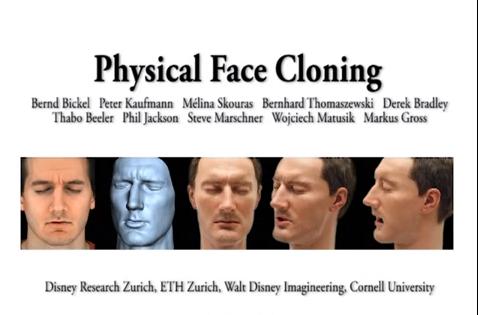Walt Disney World Researchers Are Developing New Ways to Clone Human Faces

Scholars from Disney Research, Zürich, ETH Zürich, and Walt Disney Imagineering R&D, are pioneering a new computational design method for cloning human faces.
For researchers reproducing human faces presents significant challenges. For one, in order to recreate expressive power and realistic performances, an animatronic character must be able to produce a wide variety of facial expressions each producing different deformations and wrinkles. In order to manually create the shape and material properties of a single layer of skin that will be able to display all the various emotions is a difficult task. These problems may soon be solved as Zürich scholars have developed a computational method for cloning human faces.
The computational method begins by scanning a 3D facial expression from a human participant. The then the new enhancement scheme will determine the shape of the synthetic skin as well as control the factors for the robot head which will allow researchers to provide the best match possible to the human participant. This procedure increases the realness of the character, by creating an animatronic face that will strongly resemble the human participant.
"With our method, we can simply create a robotic clone of a real person," said Dr. Bernd Bickel, researcher at Disney Research, Zürich. "The custom digitally designed skin can be fabricated using injection molding and modern rapid prototyping technology. We 3D print a mold and use elastic silicon with properties similar to human skin as base material."
Dr. Peter Kaufmann, researcher at Disney Research, Zürich, said "Our research focuses on the creation of the silicone skin. We use computation to carefully modify the thickness of the skin across the face, leading to deformations that closely match those of the real human."
According to Professor Markus Gross, director of Disney Research, Zürich, this new computational design process continues to build upon the heritage of audio-animatronics, which was pioneered by their founder Walt Disney, himself.
Published by Medicaldaily.com



























